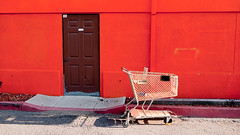When I worked at Stanford, I can’t think of a single conference that I attended alone. There was always one or two other Stanford colleagues there at over a dozen trips. In addition, because of how I started at Stanford, where I got to know a lot of other people very quickly and then built upon that base over time, I often was attending those conferences with people I knew fairly well.
Now, for a number of reasons, I have gone to conferences on my own (the rest of the staff go to their conferences on their own, too, FWIW – it’s a lot to do with lack of redundancy in our small department, perhaps more so than budget issues). The change in the dynamics when one is at a conference solo has been quite surprising.
At just about every moment – during sessions, between sessions, at meals, at special events – I am asking people if I can join them, introducing myself, and perhaps even insinuating myself into existing groups and conversations. Each time, I am working to remember names, jobs, schools, interests, and trying hard to make myself memorable, to offer something valuable in return, etc.
At times, the groups that I am trying to “infiltrate” are cliques of people who have known and worked with each other through these conferences for years. They have served as officers of the organization, presented together, etc. They are not exclusive in the sense that they shun interactions from others (a la high school or something like that), but there is an undeniable “wall” that exists when a group of people know each other that well and you’re looking in from the outside. It’s there, implicitly. And it’s daunting to ignore that sensation, even if it is all in my head. And overall, this is just simply tiring.
In reality, I am not really alone at these conferences – at each one, I have known people. But they are often there with colleagues of their own.
This is not one of my most articulate posts, but I am sitting here, in my hotel room, having retired earlier than I would like, having not gotten up the energy to break down the wall that I perceive in my head that holds me back from making that extra effort to say hello to people.

